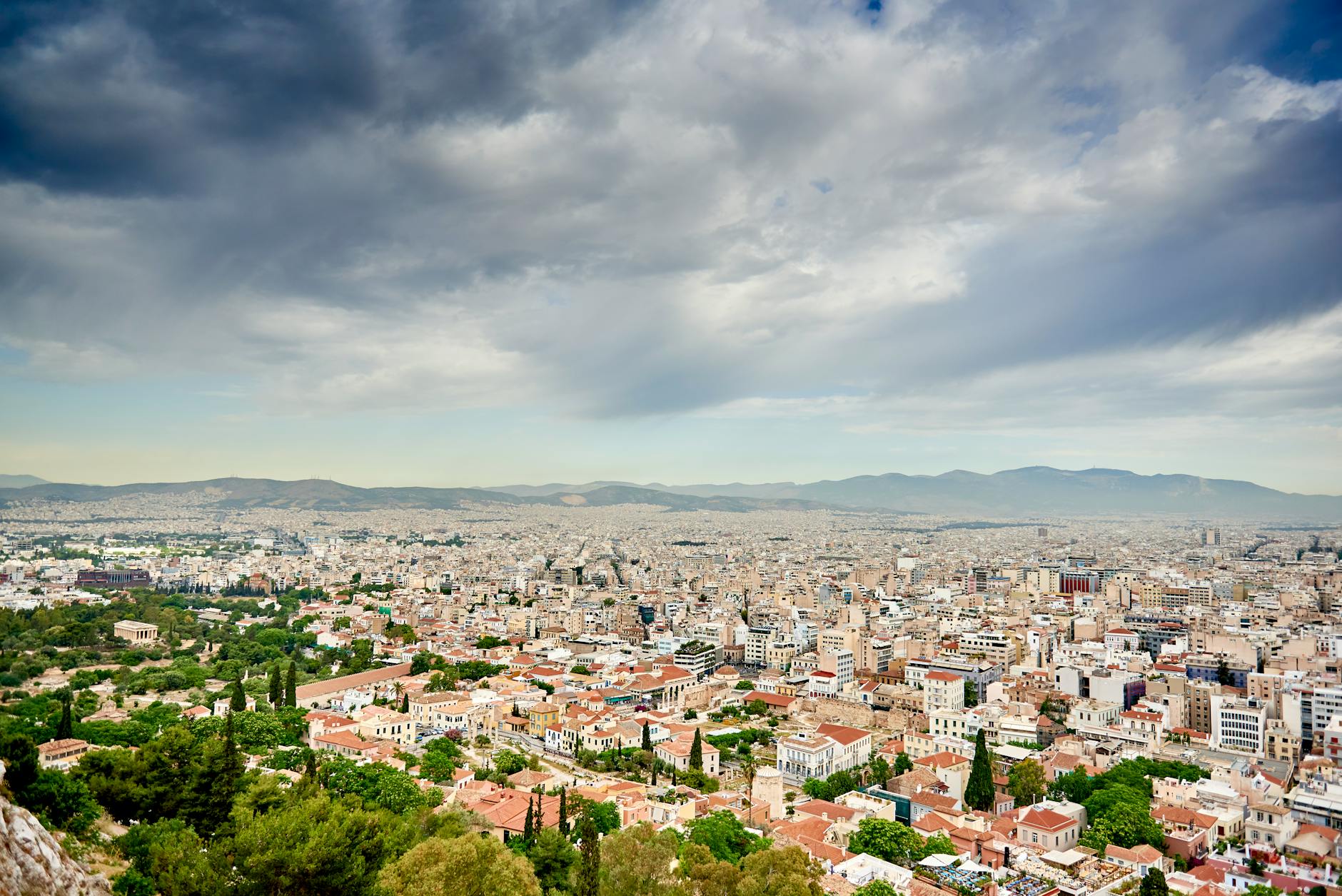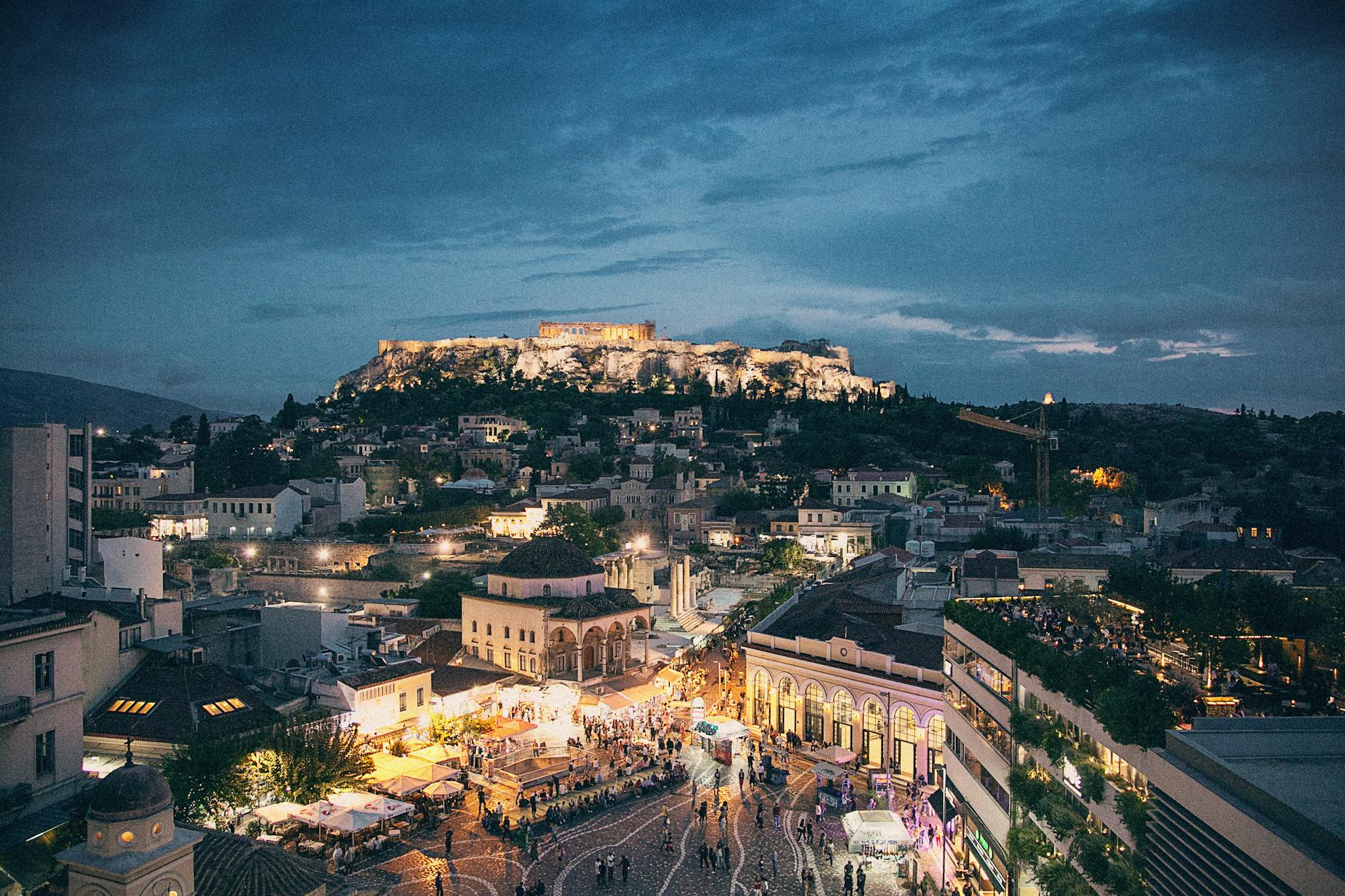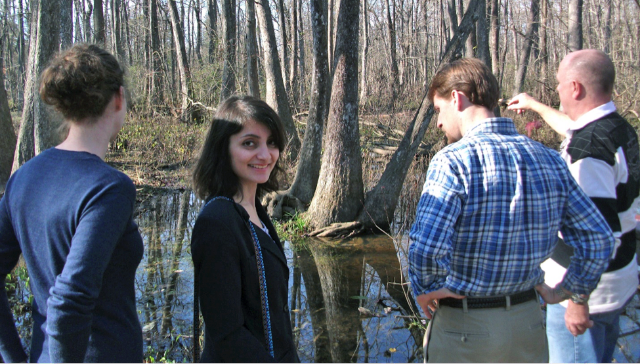You know those sweepstakes you hear about where someone wins a million dollars? Well, I won a FREE trip to Greece, all expenses paid! I stayed in some really great places, with great character and food - It was glorious. But what is even more is that I went on a tour with the most renowned historians on Greece (I can tell you about that later) which allowed me to immerse in Greece in a way I could never have if I went on my own!
My first day was in Athens, the capital and largest city of Greece. Of course, it's certainly not the prettiest of cities, but it is one of the world's oldest cities, with its recorded history spanning over 3,400 years, and its earliest human presence starting somewhere between the 11th and 7th century BC.
The main site in Athens, which is where our tour began was the Acropolis, where the Parthenon and other key historical buildings were built. The term acropolis means upper city and many ancient city states of Greece were built on an acropolis where the inhabitants could go as a place of refuge in times of invasion. It's for this reason that the most sacred buildings are usually on the acropolis. The Acropolis of Athens is basically a flat-topped rock that rises around 500 ft above sea level in the city of Athens.
Most people can identify the Parthenon - it is perhaps the most recognizable landmark in Greece. It was a temple dedicated to the goddess Athena, who was the patron of Athens. The building was designed by the architects Kallikrates and Iktinos as the home of the giant statue of Athena, taking 9 years to build and was completed in 438 BC. It is arguably the most important surviving building of Classical Greece, and its decorative sculptures and friezes are considered some of the high points of Greek art.
It is believed that the Parthenon itself replaced an older temple of Athena, which historians call the Pre-Parthenon or Older Parthenon, that was destroyed in the Persian invasion of 480 BC. From a temple it became a church, a mosque and finally as a storage facility for Turkish gunpowder.
Most people can identify the Parthenon - it is perhaps the most recognizable landmark in Greece. It was a temple dedicated to the goddess Athena, who was the patron of Athens. The building was designed by the architects Kallikrates and Iktinos as the home of the giant statue of Athena, taking 9 years to build and was completed in 438 BC. It is arguably the most important surviving building of Classical Greece, and its decorative sculptures and friezes are considered some of the high points of Greek art.
It is believed that the Parthenon itself replaced an older temple of Athena, which historians call the Pre-Parthenon or Older Parthenon, that was destroyed in the Persian invasion of 480 BC. From a temple it became a church, a mosque and finally as a storage facility for Turkish gunpowder.
What makes the Parthenon so fascinating is that to look at it, you would think that it is made up of inter-changable pieces. For example the columns are stones placed on top of each other and you could replace one piece of a column with any of the others. Not true. Each piece of the Parthenon is unique and fits together like the world's biggest and heaviest jigsaw puzzle. Lines that look straight are actually not.

Below the Acropolis is the theater of Herod Atticus built by Herodes Atticus in 161 AD in memory of his wife, Aspasia Annia Regilla. It was originally a steep-sloped theater with a three-story stone front wall and a wooden roof made of expensive, cedar of Lebanon timber. It was used as a venue for music concerts with a capacity of 5,000. It lasted intact until it was destroyed and left in ruins by the Heruli in 267 AD.
Today, it is still used for classical concerts, ballet, performances of high cultural value.
At the western end of the Acropolis is the Propylaea. In 437 BC, Mnesicles started building the Propylaea as a monumental gate of the Acropolis with Doric columns of Pentelic marble, partly built upon the old propylaea of Peisistratos. They were built under the general direction of the Athenian leader Pericles.They are on the west side of the hill, where the gate of the Mycenaean fortification once stood.

At the top of the acropolis, from the back side, you can also see the temple of Thission or Hephaistos. This temple is Doric, peripteral, with a pronaos and opisthodomos. The temple was dedicated to two gods, Hephaistos and Athena The temple is infact known as the Thission and was supposedly named for Theseus because his exploits were shown on the frieze. It is now believed that it was actually a temple to Hephaestos and Athena. Unfortunately they realized their mistake too late and the entire neighborhood is called Thission. The temple was used as a Church, dedicated to Saint George, known as Saint George the Lazy because it was only open one day of the year.

The view from the top is amazing is well and you can spot the Theatre of Dionysus dedicated to Dionysus, the god of plays and wine (among other things). The theatre could seat as many as 17,000 people with excellent acoustics, making it an ideal location for ancient Athens' biggest theatrical celebration, the Dionysia. It was the first stone theatre ever built, cut into the southern cliff face of the Acropolis, and supposedly birthplace of Greek tragedy.

The view from the top of the Acropolis of all of Athens.

Once we were done with the Acropolis, next stop was the Museum.

Although we didnt visit it, we passed by Hadrian's Reservoir - The Hadrian Aqueduct and Reservoir were the main sources of water for the city of Athens in the years that followed. It operated without change until the time of the Turkish Occupation (which began in 1456).

Finally, we arrived at the National Archaeological Museum of Athens, Greece. It is the largest archaeological museum in Greece and one of the most important museums in the world devoted to ancient Greek art. It was founded at the end of the 19th century to house and protect antiquities from all over Greece, thus displaying their historical, cultural and artistic value.
The museum had so many sites but some stood out. Of these was the Artemision Bronze statue - an ancient Greek sculpture that was recovered from the sea off Cape Artemision, in northern Euboea. It represents either Zeus or Poseidon, brandishing a missing thunderbolt (if Zeus) or trident (if Poseidon) with his raised right hand and sighting over his extended left hand. The statue is called the Antikythera Ephebe.
Then, there was a Voldemort look alike. I think this guy was related to Caesar in some sort of way.
There were lots of gold leaves, wheels, cups, earrings, pendants and pins from Shaft Grave III, "Grave of the Women", Grave Circle A, in Mycenae.The amazing wealth of the grave gifts reveals both the high social rank and the martial spirit of the deceased: gold jewelry and vases, a large number of decorated swords and other bronze objects, and artefacts made of imported materials, such as amber, lapis lazuli, faience and ostrich eggs.














0 comments